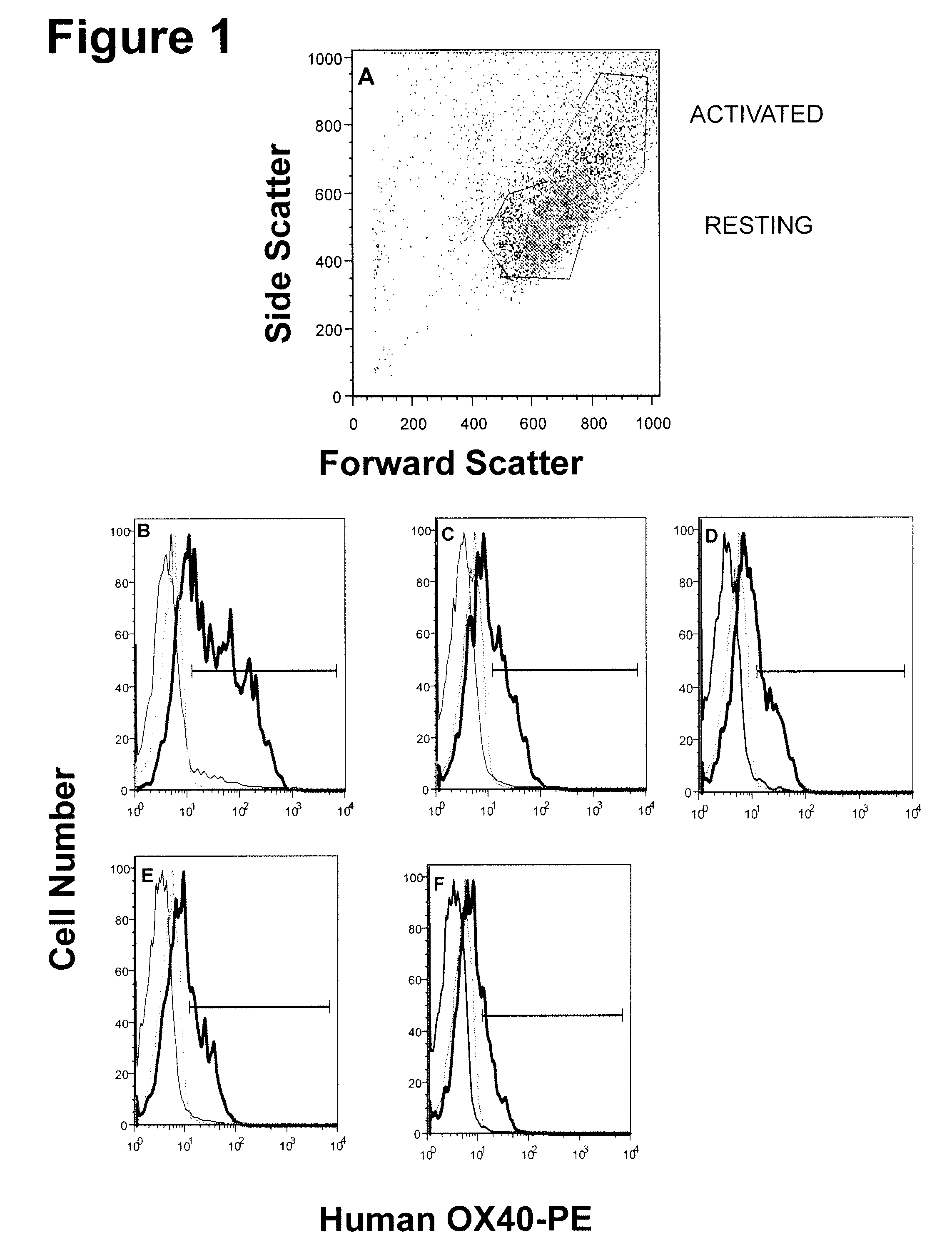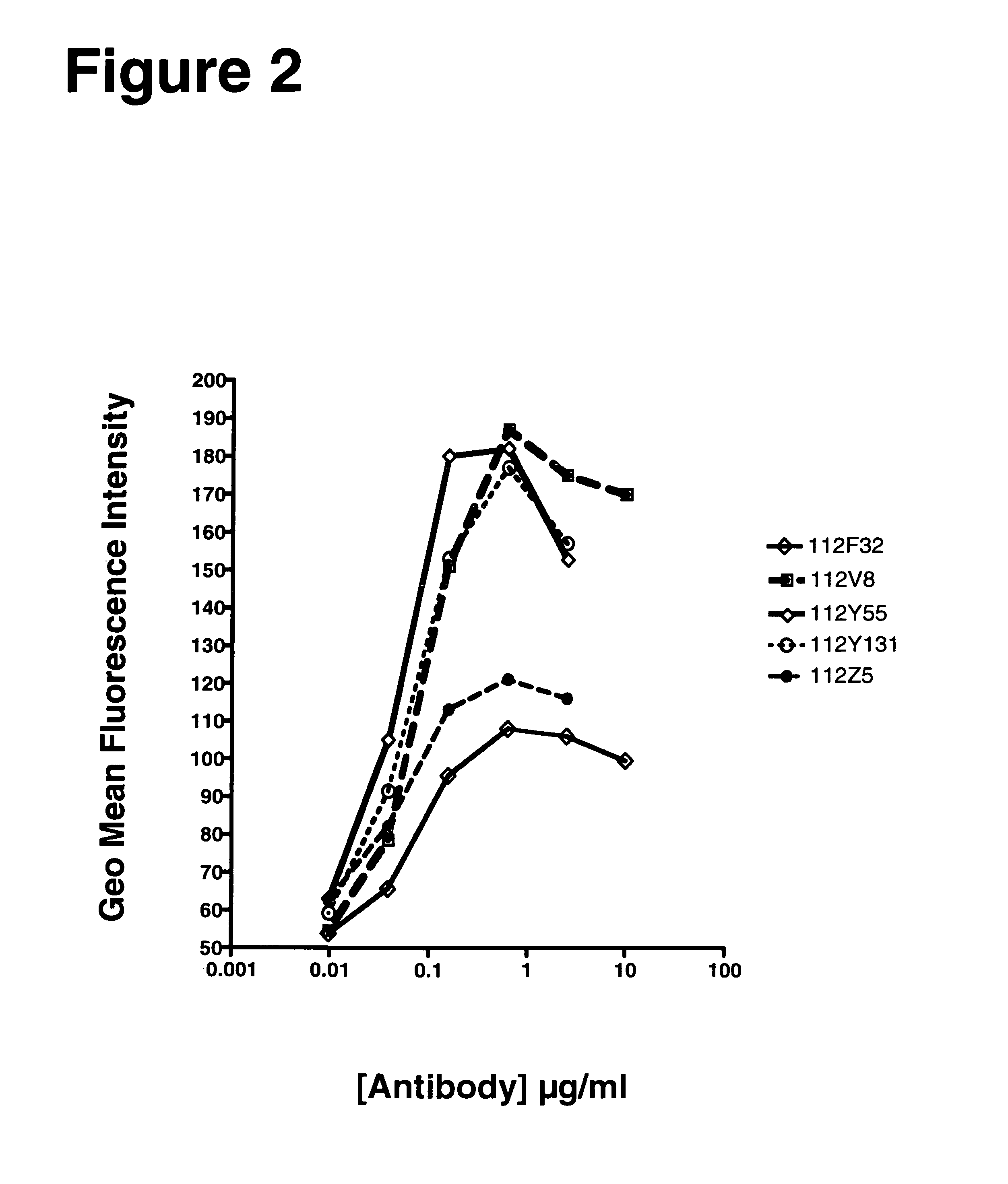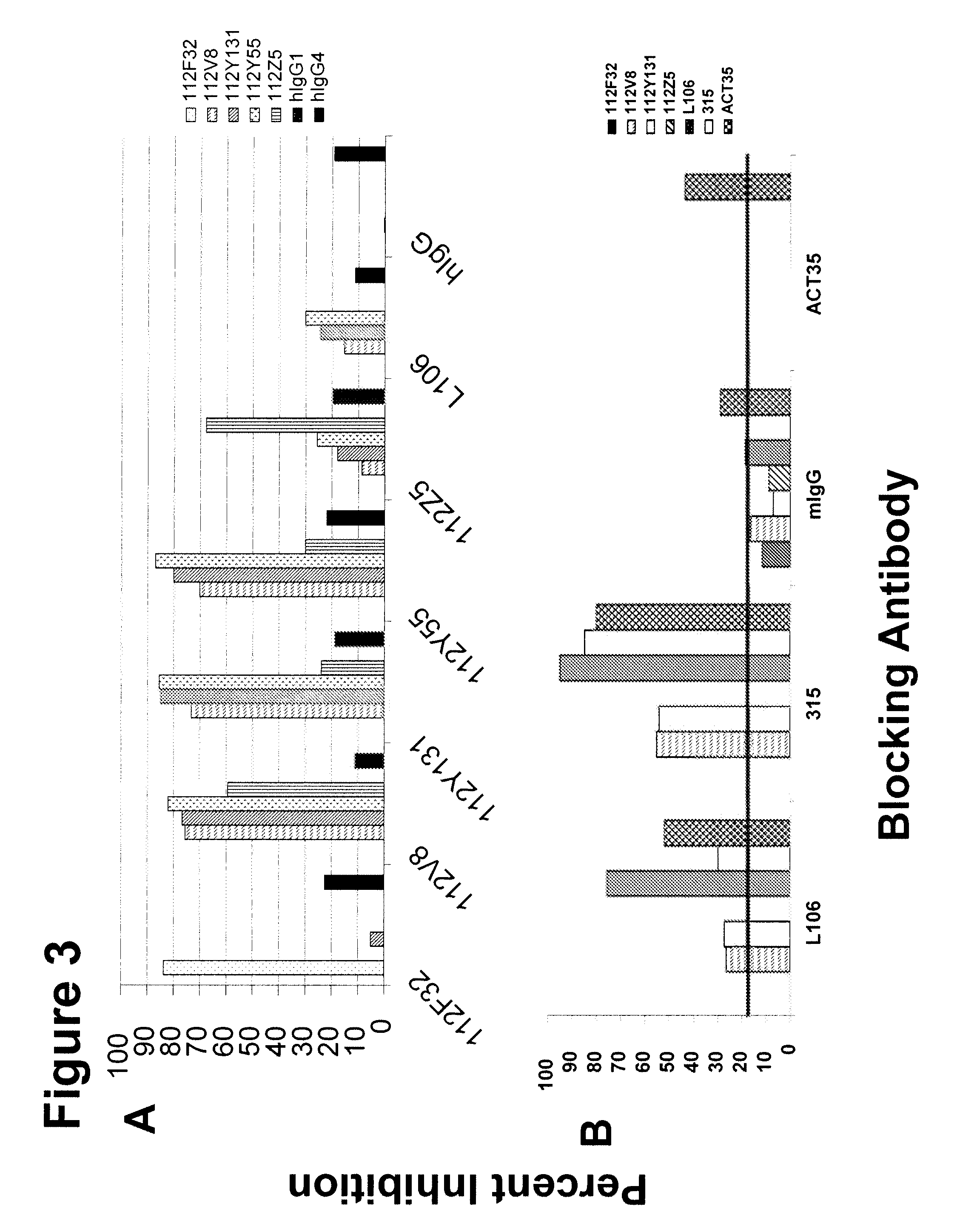Human monoclonal antibody human CD134 (OX40) and methods of making and using same
a technology monoclonal antibodies, which is applied in the field of human monoclonal antibodies human cd134 and methods of making and using same, can solve the problems of tissue destruction by our own immune system, patients become highly susceptible to infectious agents, etc., and achieve the effects of preventing graft versus host disease, reducing, reducing or preventing onset, and reducing the frequency of transplant rejection
- Summary
- Abstract
- Description
- Claims
- Application Information
AI Technical Summary
Benefits of technology
Problems solved by technology
Method used
Image
Examples
example 1
[0203]This example describes various materials and methods.
[0204]Antigen preparation: RNA was isolated from human peripheral blood mononuclear cells activated for two days with phytohemaglutinin (PHA, Remel, Lenexa, Kans.) using Tri Reagent (Invitrogen Corp., Carlsbad, Calif.). The sequence encoding the extracellular domain of human OX40 was amplified by reverse-transcription polymerase chain reaction. The amplified product was sequenced and confirmed to be identical to the published sequence of human OX40 (WO95 / 12673, SEQ NO:1). The product was sub-cloned in frame into the pfastbac-hFc baculovirus donor plasmid. This vector was generated from the pfastbac plasmid (Invitrogen Corp.) and the Fc portion of human IgG1 (“hIgG1”). The hIgG1 sequence was excised from the pV11392.fc vector. Recombinant baculovirus were generated that encoded the human OX40:hIgG1 fusion protein (hOX40:hFc). Trichoplusia ni High-Five BTI-TN-5b1-4 (“Tn5”) insect cells (Invitrogen Corp.) were infected with the...
example 2
[0275]The example describes various characteristics of human monoclonal antibodies to human OX40.
[0276]KM Mice™ were immunized with soluble recombinant hOX40:hFc in CFA / IFA, hOX40:hFC+hOX40:hFc-ova conjugate in RIBI, heat denatured hOX40:hFc in RIBI, or irradiated, activated human T cells in RIBI. Several of the mice raised anti-human OX40 specific antibodies, with a range in human IgG OX40 specific titers. Splenocytes from the highest responders were fused with myeloma cells to generate human anti-human OX40 producing hybridomas. The production of anti-OX40 antibodies was determined by both ELISA and flow cytometry using recombinant soluble hOX40:hFc and CHO-OX40 transfectants, respectively. The positive hybridomas were cloned by limiting dilution to yield monoclonal hybridomas. (Table 2)
[0277]
TABLE 2Antigens Used for Antibody GenerationAntibodyAntigen112F32hOX40:hFc112V8Activated human T cells112Y55hOX40:hFc plus hOX40:hFc-ovalbumin112Y131hOX40:hFc plus hOX40:hFc-ovalbumin112Z5Hea...
example 3
[0290]This example describes mapping epitopes of human anti-human OX40 antibodies with linear peptides of human OX40.
[0291]Three peptides within the extracellular domain of human OX40 (Table 4) were chosen to begin mapping of the epitope(s) recognized by 112F32, 112V8, 112Y55, 112Y131, and 112Z5.
[0292]
TABLE 4Human OX40 PeptidesPeptideAntibodyNamePeptide Seq112F32112V8112Y55112Y131112Z5112ARPAGPGFYNDVVSSKPC—————SEQ ID NO: 52112BRAGTQPLDSYKPGVDC—————SEQ ID NO: 53112CLAGKHTLQPASNSSDAIC—————SEQ ID NO: 54
[0293]The peptides were generated by A & A Lab, LLC and conjugated to keyhole limpet hemocyanin (“KLH”) with a maleimide linker following the manufacturer's instructions (Pierce). The peptides were coated at 10 μg / ml in carbonate buffer to 96 well Maxisorp ELISA plates (Nunc) at 4° C. overnight. The plate was washed with PBS / 0.1% Tween 20 and then blocked with Casein buffer (Pierce) for three hours at room temperature. Candidate antibodies were added at 10 μg / ml diluted in 10% Casein in ...
PUM
 Login to View More
Login to View More Abstract
Description
Claims
Application Information
 Login to View More
Login to View More - R&D
- Intellectual Property
- Life Sciences
- Materials
- Tech Scout
- Unparalleled Data Quality
- Higher Quality Content
- 60% Fewer Hallucinations
Browse by: Latest US Patents, China's latest patents, Technical Efficacy Thesaurus, Application Domain, Technology Topic, Popular Technical Reports.
© 2025 PatSnap. All rights reserved.Legal|Privacy policy|Modern Slavery Act Transparency Statement|Sitemap|About US| Contact US: help@patsnap.com



